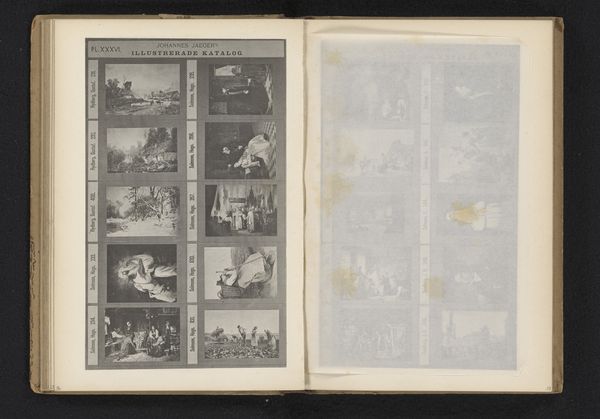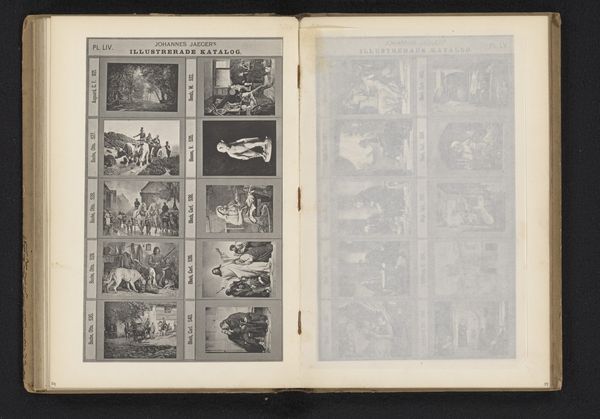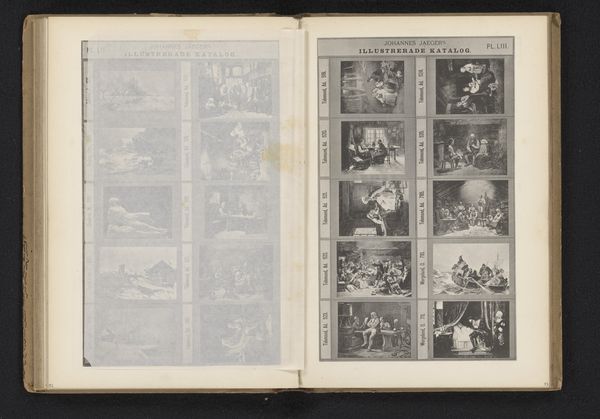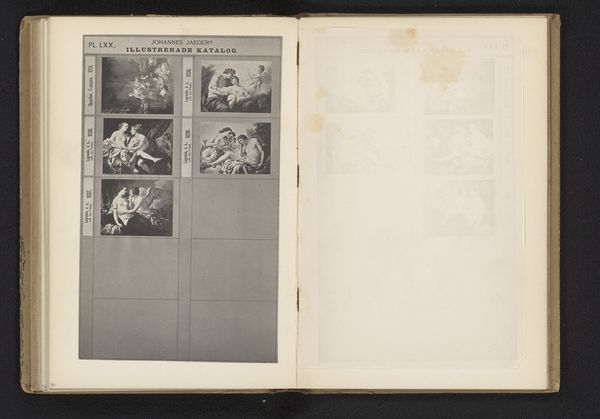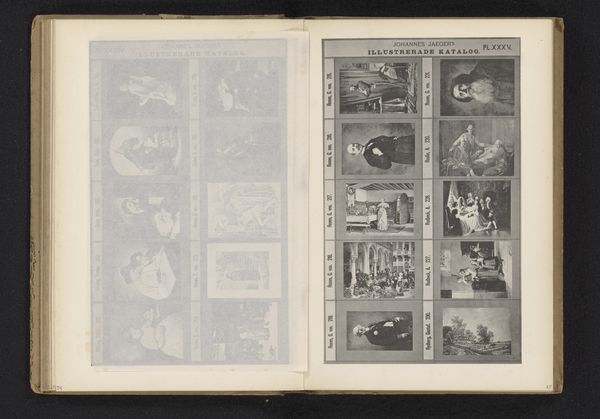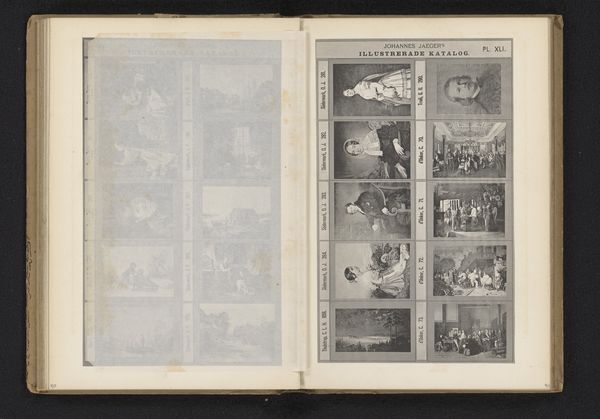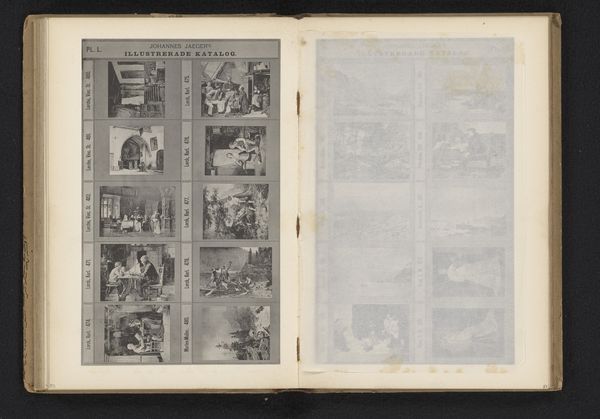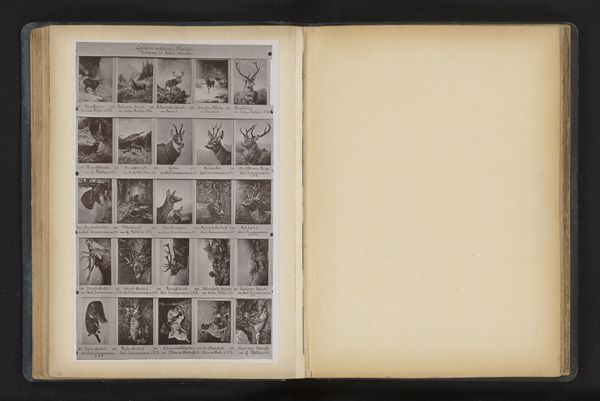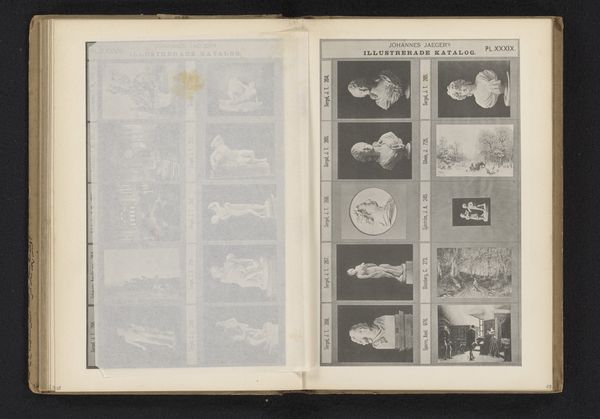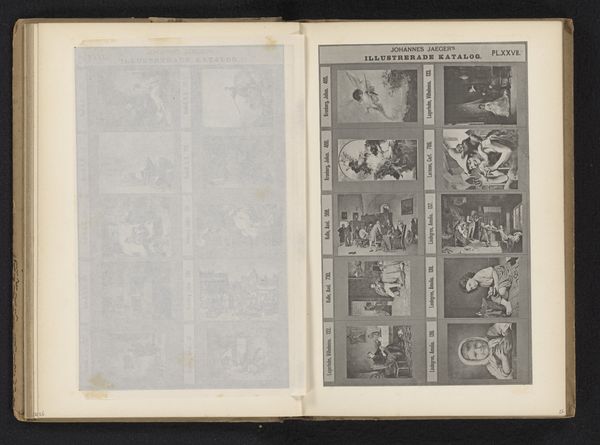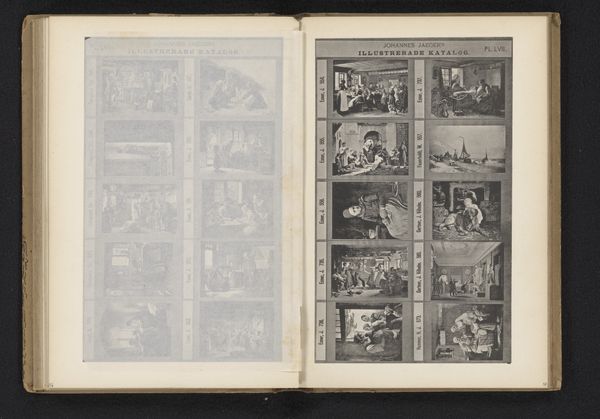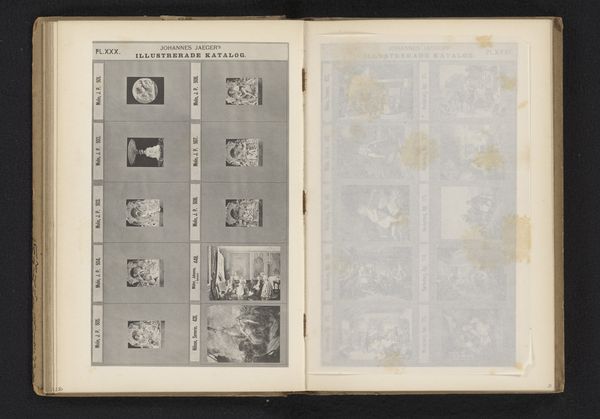
Fotoreproductie van tien schilderijen van landschappen en genretaferelen c. 1872 - 1882
0:00
0:00
Dimensions: height 182 mm, width 111 mm
Copyright: Rijks Museum: Open Domain
Curator: This is an interesting artifact: "Fotoreproductie van tien schilderijen van landschappen en genretaferelen," or "Photoreproduction of Ten Paintings of Landscapes and Genre Scenes," created sometime between 1872 and 1882. It's attributed to Johannes Jaeger. Editor: Immediately I'm drawn to the way the ten images, reproduced in miniature, create a sort of catalog effect. The black and white printing adds a strong element of visual texture. It evokes a mood of scholarly cataloging from the late 19th century, quite fitting with the subjects. Curator: Indeed, let’s delve a little deeper. These are collotypes – a specific photographic printing process – layered onto mixed media including ink and paper. Think about the labor involved in producing each collotype, printing them, assembling this "Illustrerade Katalog." It begs the question, who was the audience? Editor: Presumably Jaeger intended this to be a method of wider circulation for the original artworks, broadening the appeal beyond traditional exhibition venues. This form allowed many more people to have a taste of art they couldn’t directly experience. It highlights the societal impact photography was making. Curator: Precisely! The act of reproducing and disseminating these landscape and genre paintings changed the function of the artwork. Rather than being unique objects for wealthy patrons, they become democratized images within reach of the rising middle class. The medium directly informs that change. Editor: Thinking of that original viewership, it's also worth noting how photography allowed for the Romantic tradition to enter new phases. Consider how popular these kinds of subjects were and how important art markets were to sustain artistic production at this period. This type of item fed into a popular appetite for picturesque scenes. Curator: Absolutely, it points toward art as a commodity in an evolving market. These collotypes represent a move away from purely aesthetic value toward a functional one as well, showcasing how new industrial reproduction techniques influence art reception. Editor: By reproducing pre-existing paintings via this medium, it makes us wonder what gets added or subtracted during this transfer. What type of meaning emerges in photographic print of a painting? Curator: In the end, this "Fotoreproductie" stands as a powerful testament to the transformative role of technology and reproduction on the landscape of art consumption. Editor: A fitting reminder that art doesn’t exist in a vacuum but rather emerges within—and shapes—socio-political climates.
Comments
No comments
Be the first to comment and join the conversation on the ultimate creative platform.
